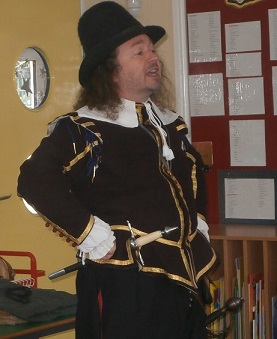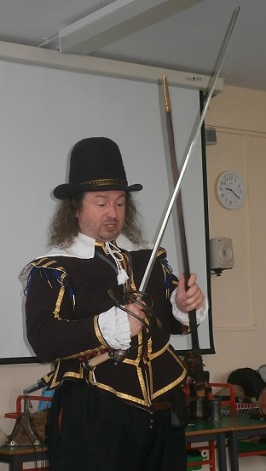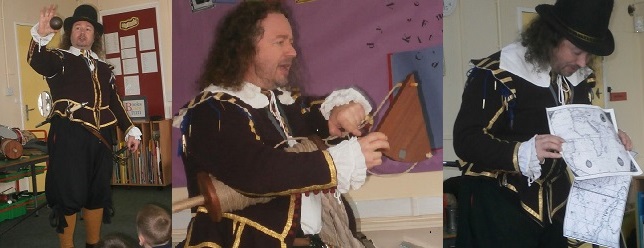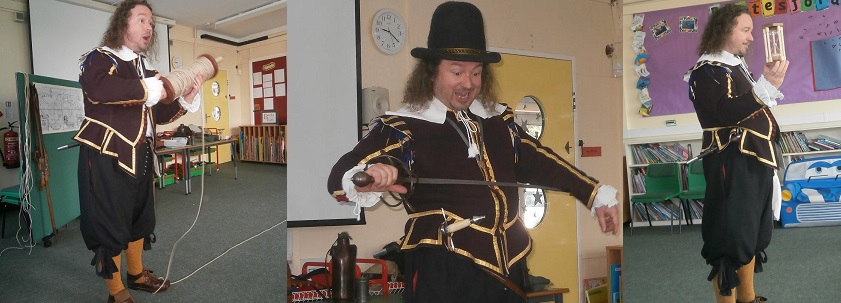For Key Stages 1 or 2
Master Laurence Eliot was one of the sailors who journeyed around the world with the famous Sir Francis Drake in the late 1570s, and is the perfect fellow to describe Drake’s famous exploit.
 This great adventure story is full of strange events, curious encounters and terrifying dangers, some which were actually encountered and others which were only fears …
This great adventure story is full of strange events, curious encounters and terrifying dangers, some which were actually encountered and others which were only fears …
- Treacherous Berbers and mutinous gentlemen
- Patagonian giants and magical cannibals
- Flying fish and flightless birds
- Storms lasting for weeks and ships lost at sea
- Chasing Spaniards and meeting a Sultan
- And best of all, how to get rich from silks, spices, chests of gold and mountains of silver.
And that’s just a part of the story!

Master Laurence usually works with one or two classes, but has worked well with more. During the day the captain tells the story of the journey, scattering demonstrations, artifact handling and activities along the way. When working with one class, the story and activities last the whole day (it was a three year journey after all). There are ways to work with more than two classes which can be arranged as necessary.
The master brings all sorts of artifacts to demonstrate during appropriate parts of the story, including lots of intriguing navigational instruments (including a ‘dipsie’ lead, a compass, an astrolabe, a nocturnal, an hourglass, a log line and a traverse board), as well as a rapier and musket, bags of spices brought back from the Moluccas and even a bar of silver taken from the back of an ‘Indish sheep‘ (aka a Llama) on the coast of Peru. He has maps to illustrate the route, and even a picture of Drake’s coat of arms, awarded after his adventure.
Navigational Instruments
The story is filled with vivid descriptions, and we stop along the way for children to handle artifacts. Individual children are supervised whilst holding a rapier or iron round-shot, drilling with a musket, and unraveling a log line and a plumb-line to see how they work. A group of children can compete to tie sailors’ knots. Sometimes several stories and encounters can be enacted by several children to make them even more involving, and occasionally the children sketch the artifacts to make their own record of Master Laurence’s possessions. There are several different formats to the day, to fit different numbers and different ages.
How does this character fit into a programme of study?
| As this story is all about Sir Francis Drake’s amazing achievement, the session works well as part of the 2014 Key Stage 1 History National Curriculum Programme of Study, either concerning “events beyond living memory that are significant nationally or globally” or regarding “the lives of significant individuals in the past who have contributed to national and international achievements, and works very well if used in comparison to a more modern explorer or traveler (like Neil Armstrong – one went around the world, the other visited another world) thus comparing “aspects of life in different periods”. For Key Stage 2 children this day serves well for a study of exploration &/or the Tudors, as part of “a study of an aspect or theme in British history that extends pupils’ chronological knowledge beyond 1066” The session also works very well as the motivation and impetus for a written literacy exercise in which the children record different parts of the story to co-create the whole story (perhaps into an illustrated display). |




